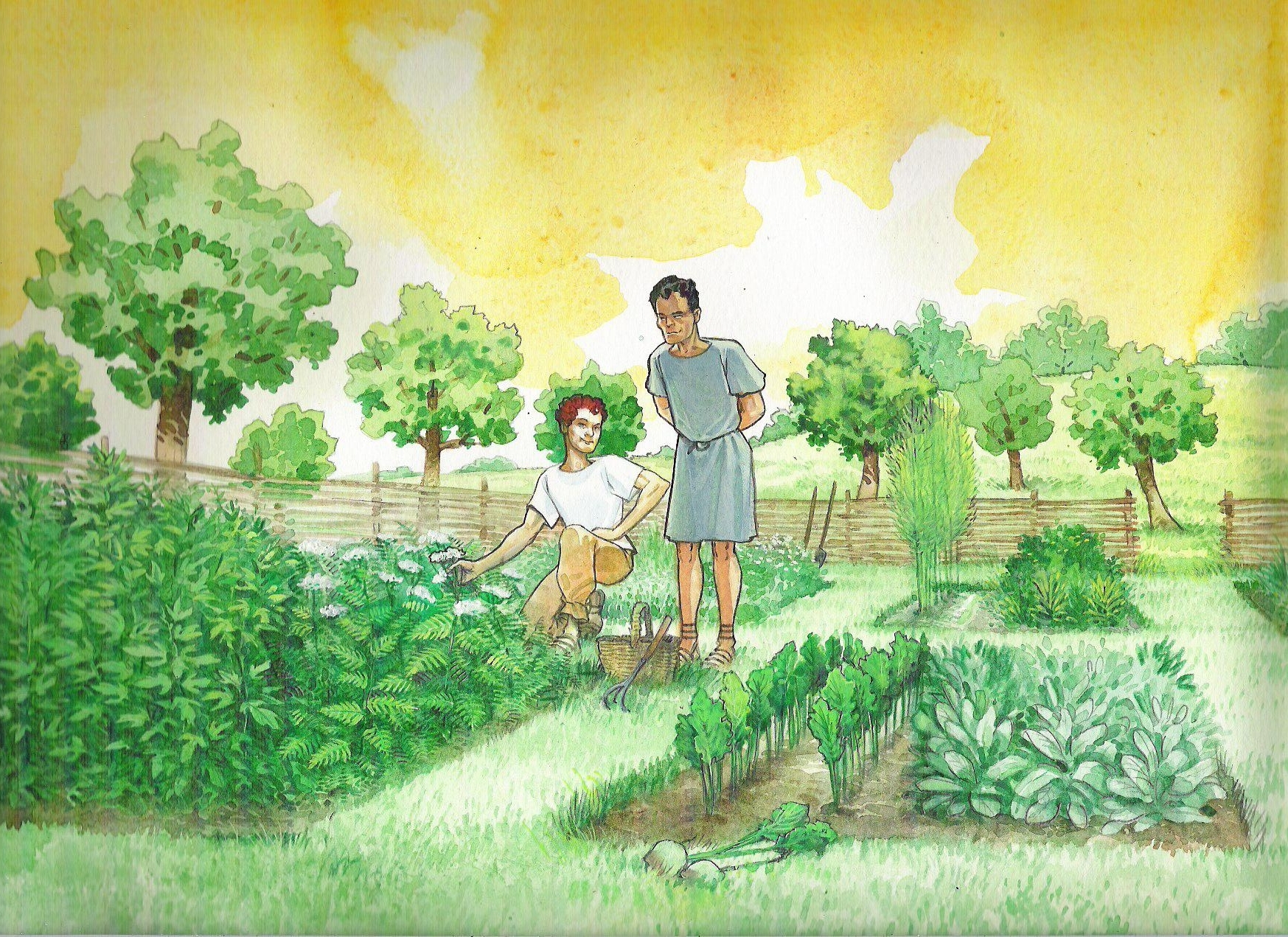
Illustration: A vegetable garden © D. Caryn
A productive garden requires the utmost care in regards to the soil: preparation is an essential step. This is done with a plough or with hand tools (hoe, two-tine forks or spade). However, the Latin authors warned against ploughing too often or too deeply, which would impoverish the soil.
“It is better to turn over the soil with hoes than with a plough. The two-tine fork stirs up the earth evenly everywhere; the plough, on the other hand, lifts up large clods of earth…”. Columella
Fallowing and crop rotation are practised.
“The ground should always be allowed to rest for a year, or at least, in two years, only be given seeds that are light enough not to exhaust it”. Varron
One practice mentioned by Pliny the Elder related to Gaul was the addition of soil known as marga; which consisted of phosphate mineral fertilisers of natural origin, marl or lime.
The ancients made extensive use of green manure and plant waste buried during ploughing. Ash was also used, sometimes mixed with manure.
“Lupins, beans and vetches are used as fertilisers. The same applies to stubble, lupin stalks, cereal straw, broad beans, husks, oak and yew leaves.” Cato
Columella also further mentions lentils, vetch and peas.
Then there was the important use of manure, a mixture of bedding and animal excrement, which was used more often dry than fresh. Both animal and human manure are used.
“There are three main kinds of manure: that which we get from birds, that which we get from men, and that which we get from cattle”. Columelle
Barnyard animal droppings, donkey dung and human manure are considered the best fertilisers for the garden.
Author: Jean-Luc Mulkens

Recent Comments